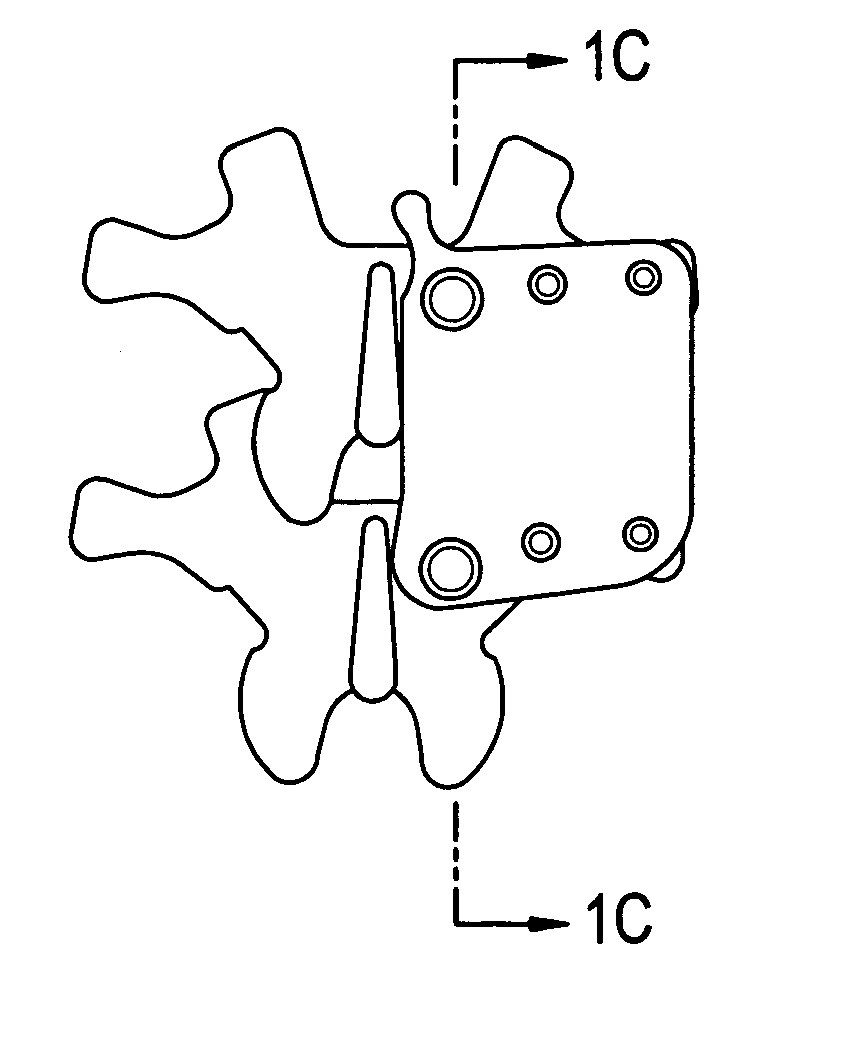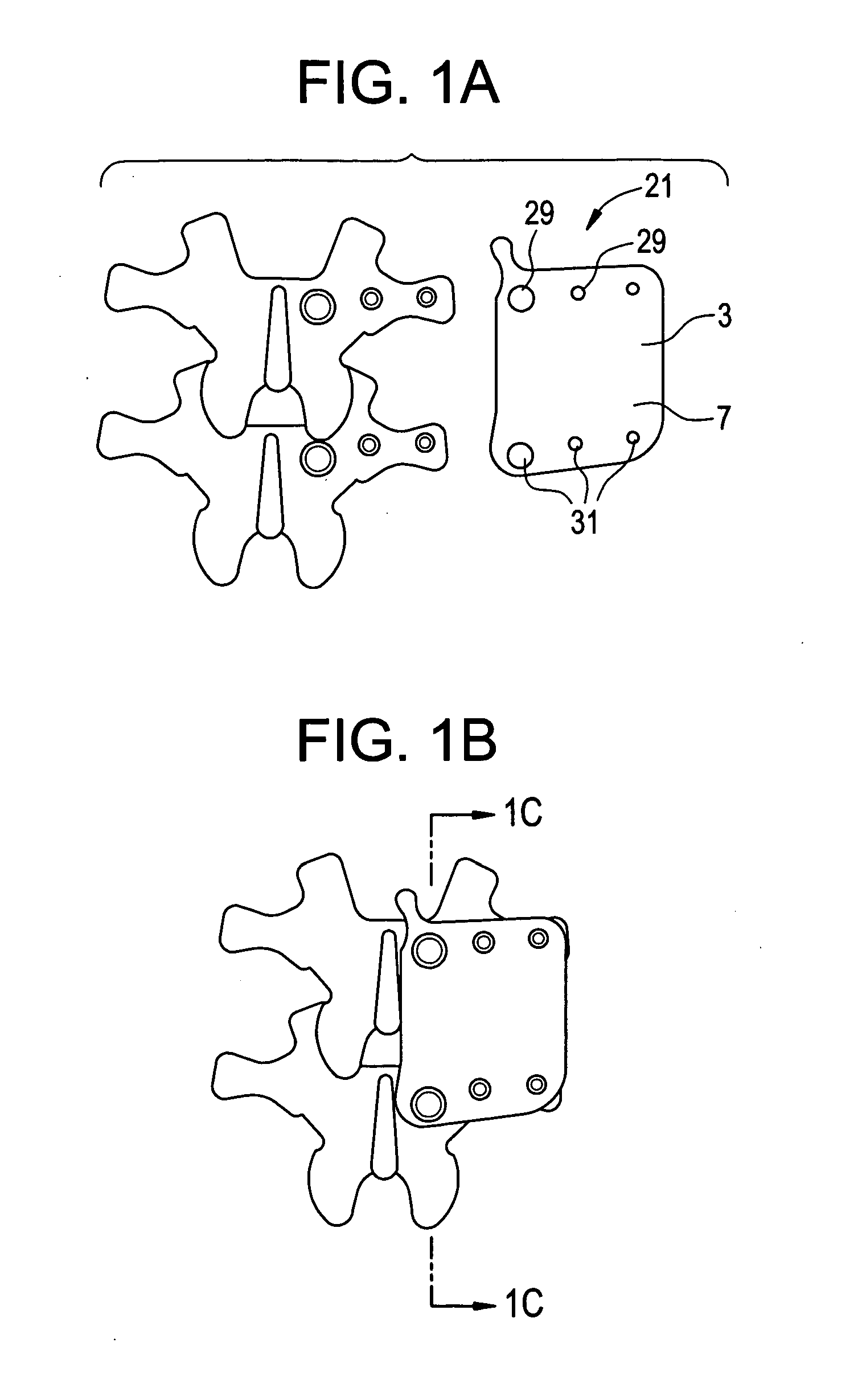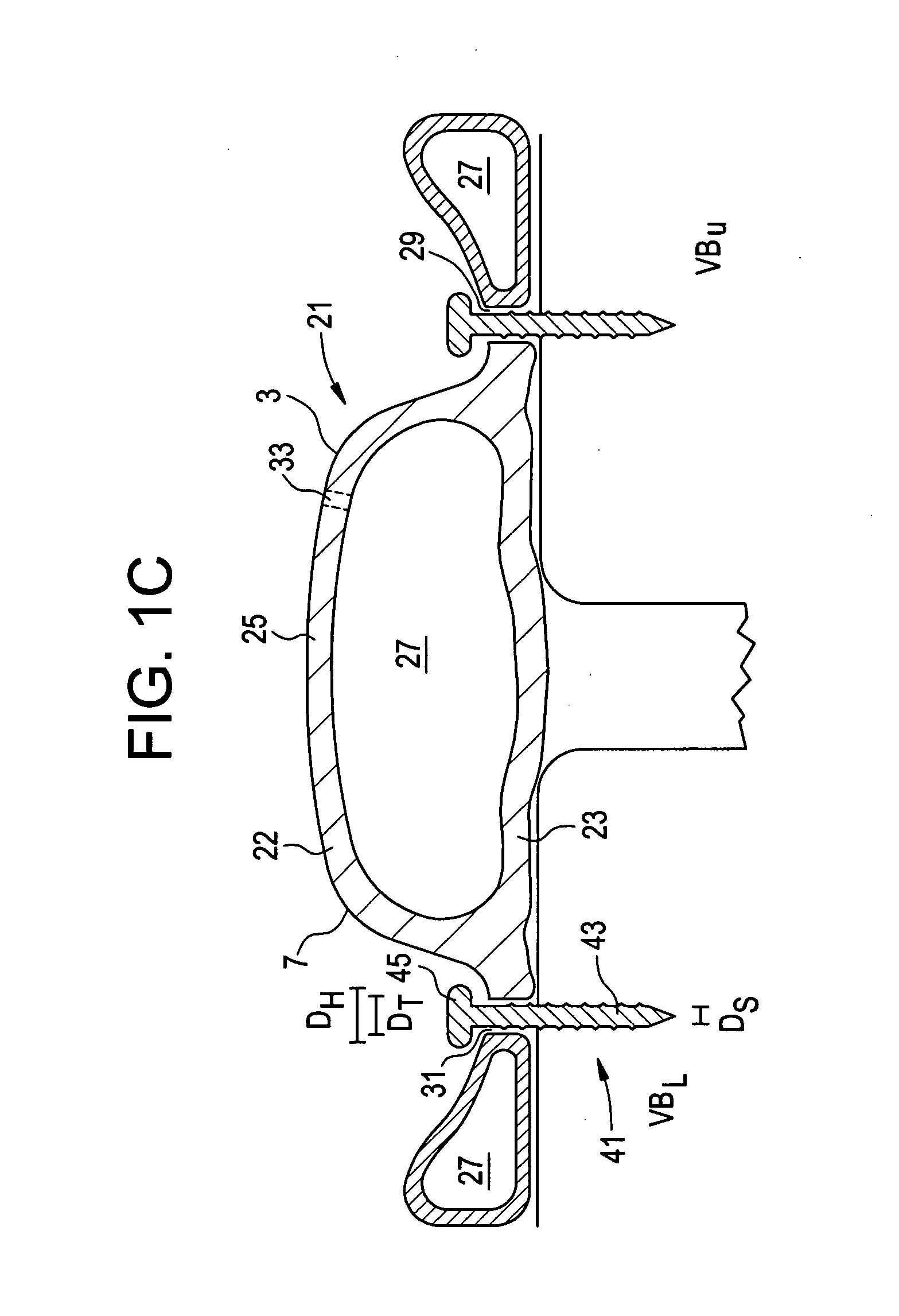In-situ formed posterolateral fusion system
a posterolateral and in-situ technology, applied in the field of in-situ formed posterolateral fusion system, can solve the problems of inability to disclose hardenable media, significant morbidity can be attributed, fracture and interference with mri and ct evaluation, etc., to avoid the permanence of metallic implants, enhance local bone growth, and slow down over time
- Summary
- Abstract
- Description
- Claims
- Application Information
AI Technical Summary
Benefits of technology
Problems solved by technology
Method used
Image
Examples
Embodiment Construction
[0025] Now referring to FIG. 1a, there is provided an exploded posterior view of a container of the present invention positioned adjacent the posterior sides of upper and lower vertebral bodies. In particular, the container 21 comprises an upper half 3 having a plurality of transverse throughholes 29 and a lower half 7 having a plurality of transverse throughholes 31. These throughholes are predetermined to align with the respective pilot holes formed in the vertebral bodies by the surgeon so that anchors may be placed through the throughholes and into the pilot holes, thereby fixing the container to the bone.
[0026] Now referring to FIG. 1b, there is provided a posterior view of a container of the present invention positioned over the posterior sides of upper and lower vertebral bodies, wherein the throughholes and pilot holes are aligned. In this condition, anchors may be placed through the throughholes and into the pilot holes, thereby fixing the container to the bone.
[0027] Now...
PUM
 Login to View More
Login to View More Abstract
Description
Claims
Application Information
 Login to View More
Login to View More - R&D
- Intellectual Property
- Life Sciences
- Materials
- Tech Scout
- Unparalleled Data Quality
- Higher Quality Content
- 60% Fewer Hallucinations
Browse by: Latest US Patents, China's latest patents, Technical Efficacy Thesaurus, Application Domain, Technology Topic, Popular Technical Reports.
© 2025 PatSnap. All rights reserved.Legal|Privacy policy|Modern Slavery Act Transparency Statement|Sitemap|About US| Contact US: help@patsnap.com



